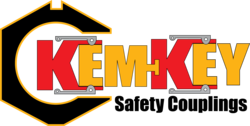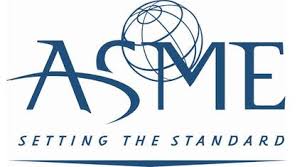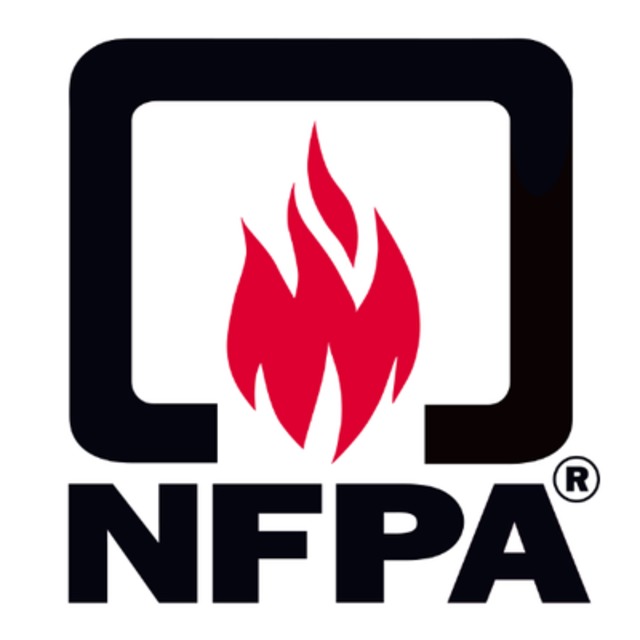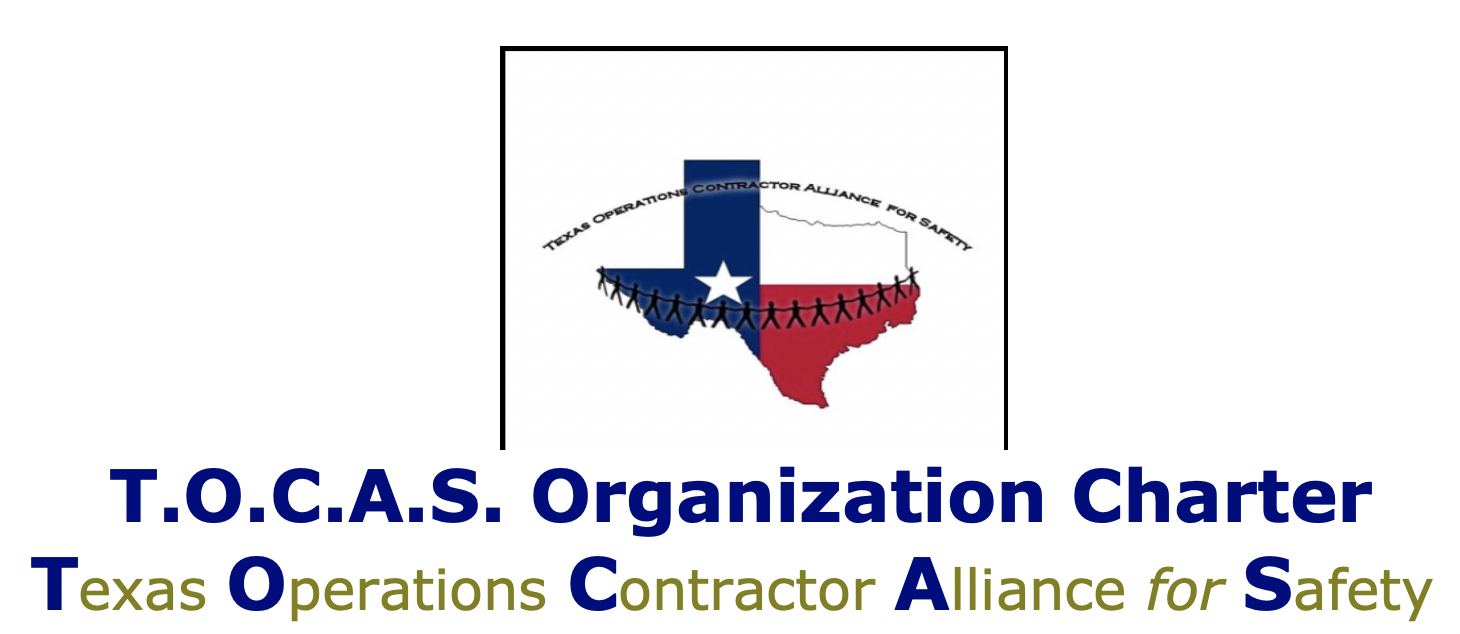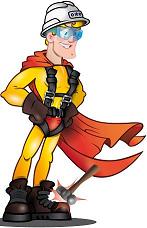Overview: A tire blowout occurs after the mechanical failure of the tire or rim assembly at pressures typically around 145 psi. Tires exposed to heat may undergo the process described below and violently explode.
Explosive Process: There are three (3) phases leading to a tire explosion:
1. Air pressure inside the tire will rise from 90 to 235 psi as temperatures rise.
2. At approximately 365⁰ Fahrenheit, the rubber undergoes a runaway exothermic reaction, releasing flammable gases that increase pressure within the tire. This reaction can continue even if an exterior fire is extinguished.
3. An explosion will occur when the tire contains at least 5.5 percent oxygen, and the flammable gases reach their lower explosive limit and auto-ignition temperature. The explosion may generate shock waves and pressures over 1000 psi.
NOTE: this explosive force is generated from tires inflated with ambient air regardless of the rim assembly present on the vehicle.
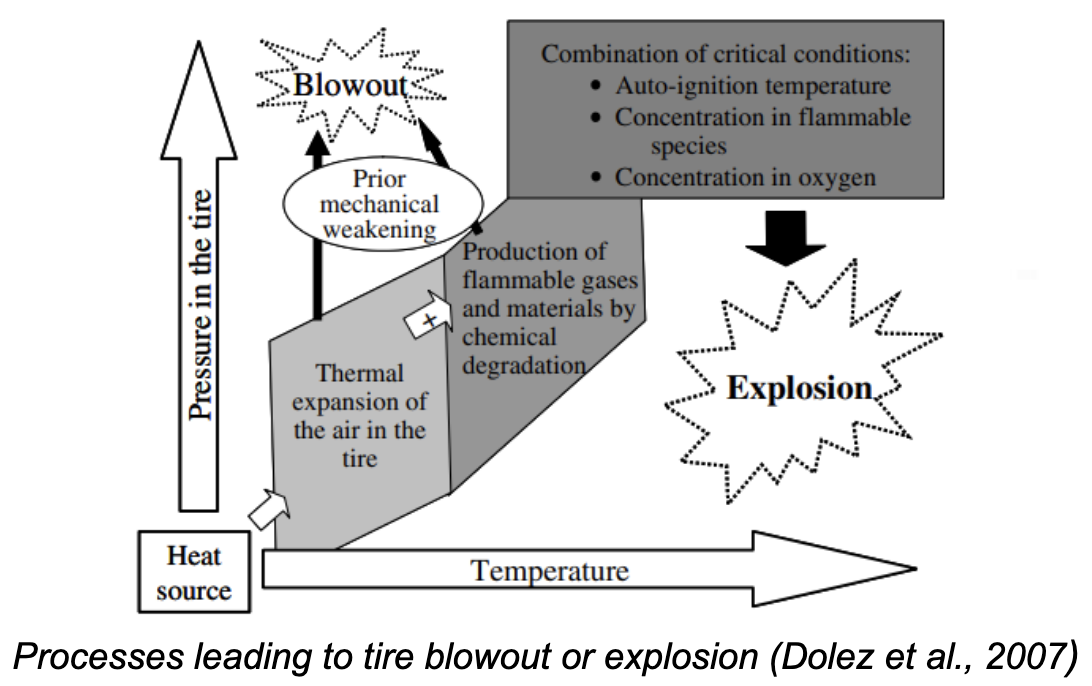
Explosive Effects: The explosion generates a shock wave and projectiles. The shock wave pressures of tractor-trailer and heavy equipment tire explosions were utilized to establish the “Exclusion Zone” and “Immediate Rescue Only Zone,” illustrated in the figures on page two of this document, based on:
- Shock wave pressures of 1.5 psi or less are safe.
- Shock wave pressures between 1.5 and 14.5 psi will cause injury.
- Shock wave pressures between 14.5 and 43.4 psi may cause fatal injury.
- Shock wave pressures at and above 43.5 psi are fatal.
Projectiles from tractor-trailer and heavy equipment tire explosions may travel up to 350 feet. This value was utilized to establish the “Rescue Only Zone” and “Limited Operation Zone,” as identified in the following diagram.
Response: The Risk Management Process (RMP) shall be utilized on all incidents and include both the hazard(s) present and the incident priorities. The figures on page two increase the hazard awareness for incidents involving large vehicle tires. Hazard controls of time, distance, and shielding can be implemented based on the RMP and incident priorities. Note that incidents involving large vehicles may present additional hazards, such as alternative fuels and hazardous cargo, and the RMP must address each hazard present.
Explosive Hazard Zones: The following figures identify the explosive hazard zones and acceptable operations for two general classifications of large vehicles, tractor-trailers and heavy equipment.
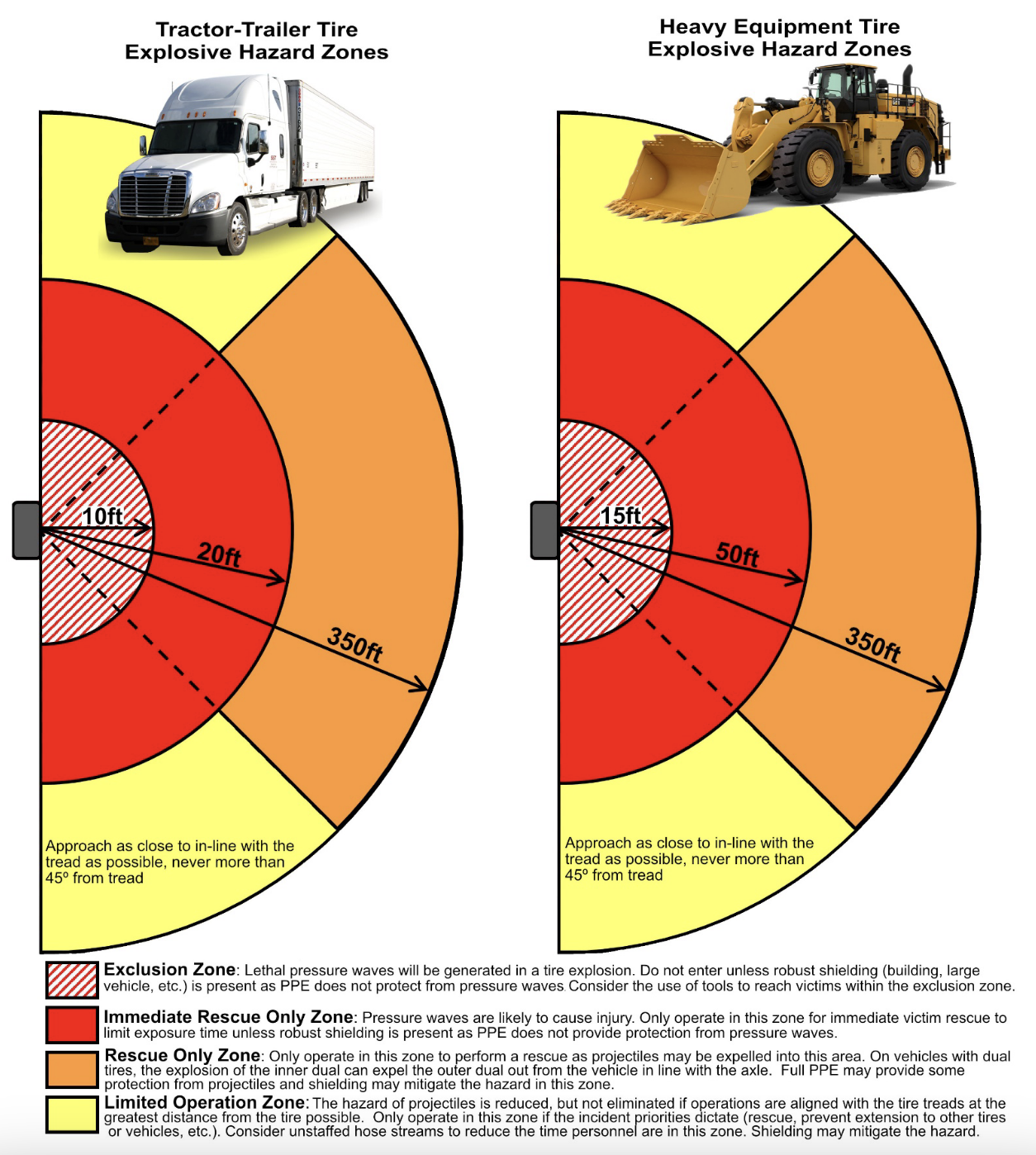
Even after the exterior fire is extinguished, tires exposed to heat may continue to undergo a runaway exothermic reaction and explode.
Do not immediately approach a tire that has been exposed to significant heat.
CLICK HERE for the PDF version

